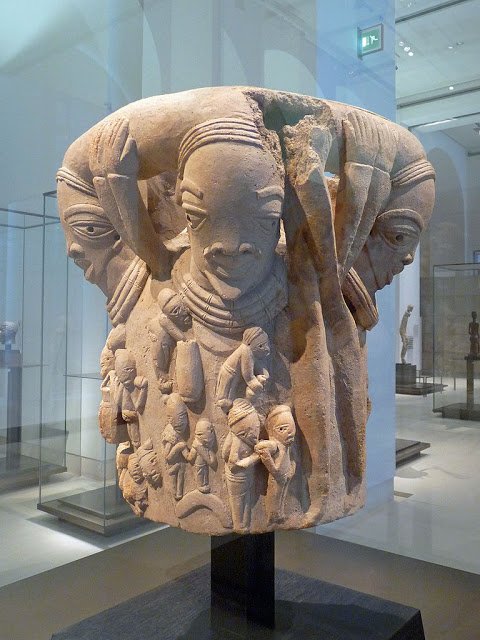Get To Know The Nok Culture, Nigeria’s Oldest Known Civilization (pics)

When British Archaeologist Bernard Fagg
received a terracotta head that had served as a scarecrow for a local
clerk in the Jos area, he knew he was up to something. The head
resembled sculpture that he had earlier seen- one discovered fifteen
years before by a worker at a mine near the village of Nok in the Jos
Plateau area. But Fagg had no idea that the piece, like the one which it
resembled, was the product of a hitherto unknown culture that dominated
the area thousands of years ago.
The scarecrow head was found in 1943. At that time, Fagg was an
administrative officer with the British colonial government in Nigeria.
His training in archaeology and his love for exploration led him to
investigate the terracotta find. He travelled throughout the vicinity of
the Jos Plateau in his search for more clues to the origin of the
piece and found that the local people had been happening upon similar
material for years.
Over time, he collected a significant trove of
terracotta, including some from excavations done in the area by his own
men. The discoveries were analyzed and dated, and they yielded results
which at the time was considered stunning- some of them were at least
2,500 years old. It soon dawned on Fagg and his collaborators that they
had discovered the works of a lost civilization, one of the oldest in
sub-Saharan Africa.
Area of Nok Culture by NordNordWest via Wikimedia Commons.
Why Nok Matters
Not much is known about the history of West Africa before the rise of
the ancient Ghana kingdom in the middle ages. Prior to the discovery of
the Nok culture, Historians did not speak of the region as being the
centre for any significant activity worthy of being recorded in history
books. It was, along with most of sub-Saharan Africa, the backwater of
the ancient world, probably populated by hunter-gatherers and nomads-
far removed from the exciting events unfolding in such places as Egypt,
Babylon, Greece, or Rome. Nok has contributed to a revision of this way
of looking at history.
The society that produced the quality of terracotta art found in the
Nok sites was, for its age, quite advanced. From around 1000BC-200AD, a
30,000 mile stretch of northern Nigeria was the setting for a boom in
art and culture made possible by skilled craftsmen and an organized
societal setup. Their terracotta works, in particular, have caught the
world’s attention, with their detailed renditions of the human form.
Numerous pieces with cylindrical heads, semi-circular eyes, pierced
mouth and ears, flared nostrils, body markings, and adornments have been
unearthed. They represent the oldest known example of terracotta
sculpture in Africa, south of the Sahara.
The unearthing of a piece of Nok art in 2012. Copyright, Peter Breunig
Nok art unearthed in 2012. Copyright, Peter Breunig via pasthorizonspr.com
An aspect of the Nok culture that isn’t talked about that much
outside scholarly circles is its iron smelting. The people who
inhabited the area at the time of the culture’s flourishing are known to
have produced iron. Evidence of this has been found in remains of
furnaces dating back as far as 500BC (iron arrowheads, bracelets, and
knives have been found as well). This makes Nok one of the oldest iron
smelting civilizations in Africa.
For a thousand years, Nok thrived. It must have had a fairly well
organized societal structure; it required great skill to smelt iron and
create terracotta, and skilled workmen may have been in charge of them.
Such groups were probably formed into guilds. Because the clay type used
by the sculptors throughout the area occupied by the Nok people appears
to have come from a single source, experts have suggested that there
may have been some form of rule or (authority) governing its manufacture
of terracotta.
Popular female Nok head. Photo credit, unknown.
Nok’s Legacy
Nok seems to have vanished as mysteriously as it appeared. Causes
proposed range from over-exploitation of natural resources to the
destruction of vegetation for charcoal. Whatever the reason, its
disappearance left what still looks like a gaping hole in the history of
Nigeria’s early peoples.
It is possible that Nok influenced the art of later civilizations
further south. Some historians point to similarities between Nok
terracotta and the Ife bronze heads as evidence of this. However, the
line of continuity from Nok to Ife is, as yet, still only faintly drawn.
Historians and archaeologists might not agree on every detail
regarding the history of Nok. But they all speak with certainty about
the fact that there remains a lot to be discovered about the Nok culture
and what its people have left behind.





